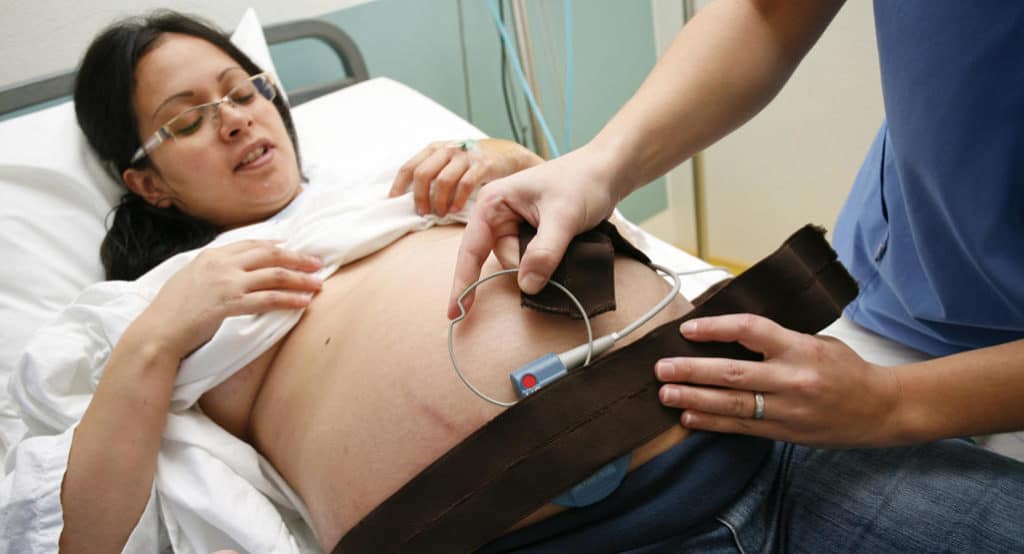
Table of Contents
The nonstress test during pregnancy is generally done in the third trimester in order to check the baby’s well-being. This NST test measures the heart rate and the response of the baby to the movements around, making sure of their health and knowing whether they are getting enough oxygen in the cozy womb of the mother. It is usually done in the last trimester of your pregnancy to make sure of no complications if it is a high-risk pregnancy, or past your due date.
The test NST is medically reviewed to be safe and noninvasive justifying its ‘nonstress’ name and only seeing if the baby’s heartbeat is normal as expected.
We at Parenthood bliss understand that these tests could make the mother stressed, and the easiest way to not be so is to learn about the nonstress test to peace with it. To know that, you need not divert but simply read on to get answers to, why nonstress tests are done, when is it needed, how do they work, and what do the test results mean for either you or the baby.
Who needs a nonstress test during pregnancy?
The doctor may opt for an NST test in the third trimester of pregnancy, that is, 28 weeks onwards, and the reasons for the same could be many.
The nonstress test may be done in the following cases:
- The due date has long passed and the baby stays put
- The baby is small for their gestational age or the baby’s movement is not seen
- You are facing certain pregnancy complications like gestational diabetes, preeclampsia, or an underlying medical condition such as type 1 diabetes, heart disease, or high blood pressure
- There are multiples at once
- You have had complications during a previous pregnancy
- Both, you and your baby are facing or are Rh incompatibility
- Low levels of amniotic fluid levels
- The fetal heart rate is negligible
How to prepare for a nonstress test done to know the baby's heart rate
There isn’t anything you could do to prepare before you have a nonstress test, but make sure you do the following:
- You must eat something or even if it’s a snack before this noninvasive test takes place, as your baby is likely to be at the shortest wriggle post you have eaten.
- Since the non-stress testing takes up to 40 minutes, you might as well go for a bathroom run too.
- Wear comfortable, loose-fitting clothes that provide access to your belly for an easy examination, and also lets the doctor sensor around the abdomen.
- In case you take medications, check with the healthcare provider whether it’s ok to have them before the test. This is because certain drugs tend to make the babies less reactive.
What happens in the nonstress test during pregnancy (NST)?
Nonstress tests take up to 20-40 minutes, in case the baby isn’t much reactive or is asleep. If so, the Obstetricians and Gynecologists would try to stimulate the pathway of the baby by making you drink something sugary or by placing a noise-making device near your belly.
During this test, a stretchy belt monitor will be placed around your belly, just like the one used during labor and delivery. It shouldn’t hurt or make you feel uncomfortable. Then you’d be asked to lay in a reclining chair so you can keep track of each movement the baby makes.
What do the results from the nonstress test mean?
The baby’s performance will be determined as per the nonstress test and classified as reactive or nonreactive. Here is what the two mean:
A reactive NST result-
As the name suggests, a baby who makes a lot of movements and has a normal heart rate is termed as “reactive” meaning they are healthy with no stress. For instance, if the test took place before the 32nd week and the results come are reactive, the fetal heart rate is above the baseline twice for at least 10 seconds during the exam and that length increases to 15 seconds.
A nonreactive NST result-
A “non reactive” result baby is one who doesn’t meet the minimum number of movements during the 40-minute period. Or, the heart doesn’t accelerate as expected if moved.
However, this doesn’t necessarily mean that the baby is in danger, as there are chances that they might be sleepy or less active. Or, the levels of oxygen are enough for the baby. If the baby is determined to be under stress, the doctor may put you through further testing (like a biophysical profile) to know if labor induction or early delivery would be necessary.
Are there any risks of a nonstress test ?
Fortunately, the nonstress tests are noninvasive and absolutely safe to perform with no physical risk on either you or the baby. However, it is understood that the test might make you rather stressful which perhaps could follow into extreme anxiety that might potentially affect the results.
And, if you’re very stressed about the test and are feeling troubles when trying to cope up, talk to the doctor and manage your concerns.
That’s all about the nonstress test or NST test to know the movement, health, and heart rate of the baby. However, there are other noninvasive prenatal tests (NIPT) too to look at and know about.
Nonstress Test During Pregnancy Final Conclusion
As most tests might seem difficult to cope with especially as you enter the third trimester, this nonstress test stands up and stays true to its name. Even approved by the American College of Obstetricians, these tests are non-invasive and completely safe. However, if you still feel a little out of the frame and would need to talk it out, always reach to your doctor to get more clarity.










